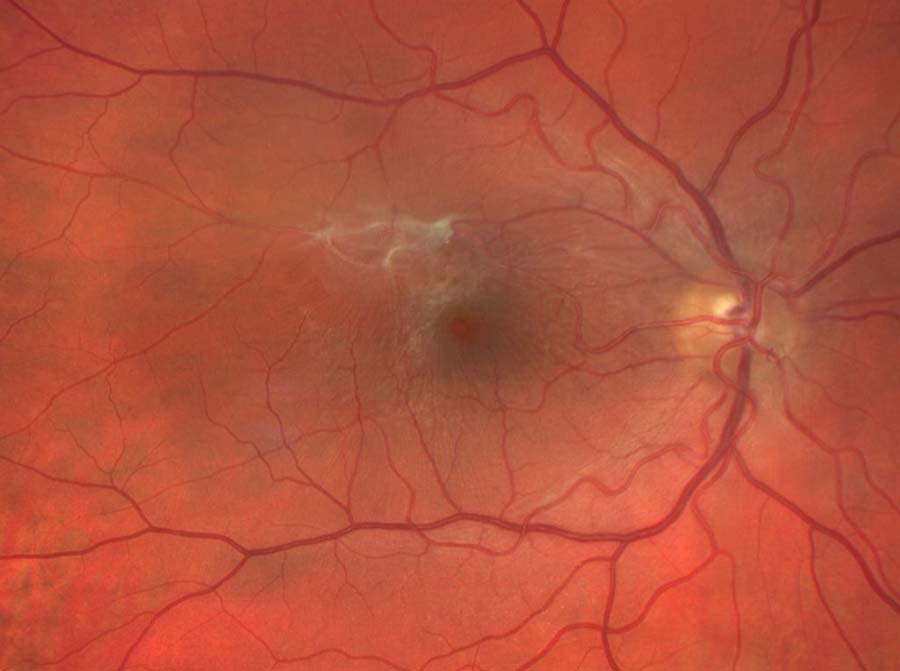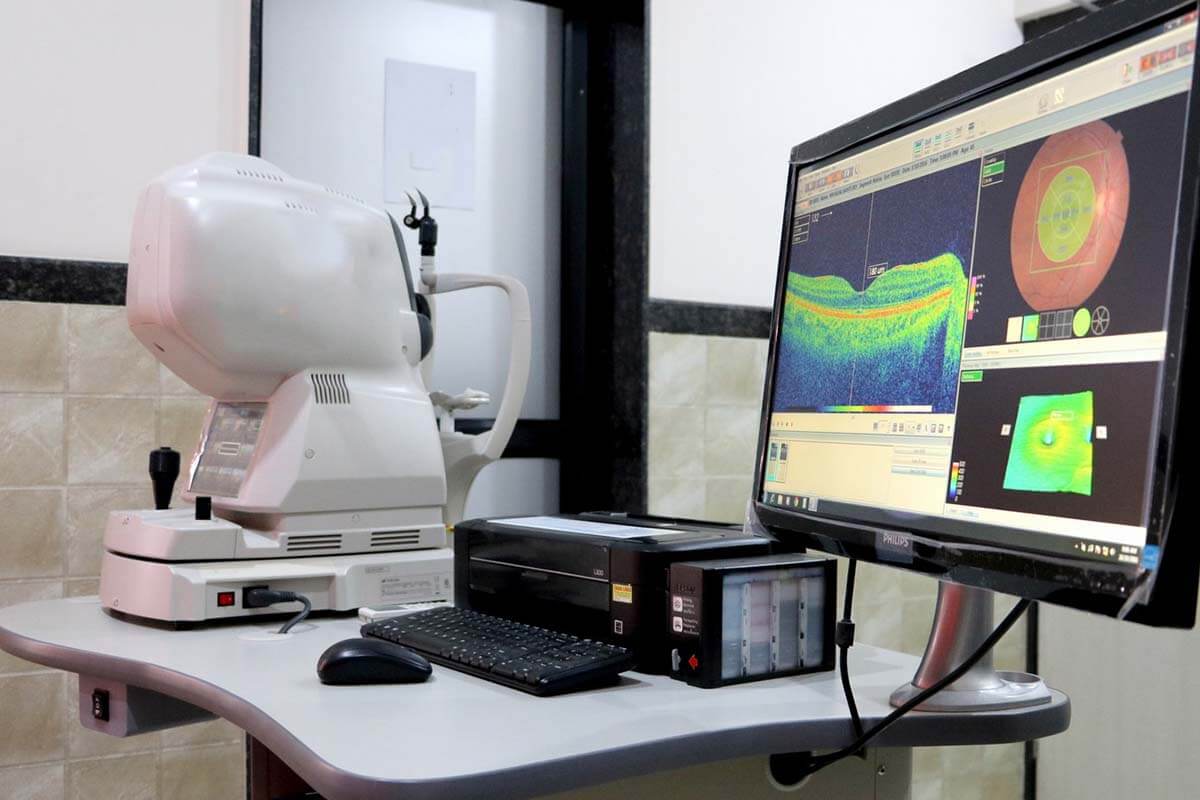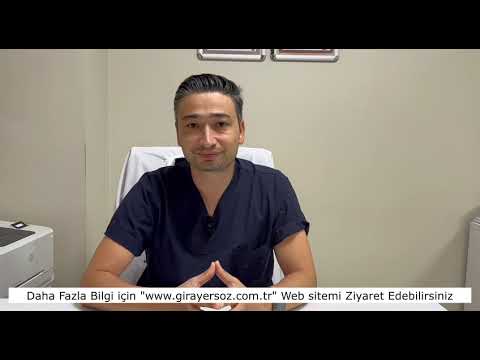Epiretinal membrane (ERM), also referred to as macular membrane, is a condition that affects the eye’s retina. In this article, we will delve into the symptoms of ERM, its diagnosis, and the available treatment methods.
What is Epiretinal Membrane? Where in the Eye Does It Occur?
Epiretinal membrane, often abbreviated as ERM, refers to a transparent and membranous tissue formation that occurs within the macula, also known as the yellow spot, situated at the center of the retina. The macula is pivotal for clear and color vision. It’s important to note that while epiretinal membrane and age-related macular degeneration may share the involvement of the macular area, they are distinct eye conditions. Epiretinal membrane disease should not be confused with age-related macular degeneration.
Who Does It Affect?
Epiretinal membrane (ERM) is typically observed in individuals aged 50 and above. However, it can also develop at younger ages, especially in individuals with eye injuries or retinal tears. Epiretinal membrane affects both men and women equally.
Why Does Epiretinal Membrane Form in Our Eyes?
Epiretinal membrane typically forms spontaneously. The vitreous gel that fills the back portion of our eyes adheres to the retina. Over the years, the structure of this gel can deteriorate, and it often begins to detach from the retina, usually after the age of 50. This detachment is believed to trigger the formation of epiretinal membrane. Additionally, conditions such as diabetic retinopathy (associated with sugar-related retinal bleeding), retinal vein occlusions, retinal tears, and eye injuries can also trigger ERM formation.
The Structure of Epiretinal Membrane
When we examine the structure of epiretinal membrane, it is primarily composed of glial cells, which are support cells of the retina, and pigment epithelial cells of the retina. Additionally, other cells like fibrocytes, astrocytes, macrophages, and myofibrocytes can also be found in the composition of ERM.
What Are the Symptoms of Epiretinal Membrane?
In its early stages, epiretinal membrane often does not present any symptoms. Over time, patients may describe symptoms such as decreased vision, distorted vision, wavy vision, altered perception of object shapes, difficulty in reading, loss of depth perception, and seeing one object as different sizes when viewed with both eyes. One of the recently identified symptoms of ERM is “binocular interference,” which refers to improved vision when the affected eye is closed.

Does Epiretinal Membrane Cause Permanent Vision Loss?
If left untreated, an epiretinal membrane that has started to reduce vision can lead to permanent loss of central vision.
Incidence of Epiretinal Membrane
Epiretinal membrane is estimated to have an annual incidence rate of 1% within the general population. This signifies that one out of every hundred individuals receives a diagnosis of epiretinal membrane each year. This prevalence is notably high when considering eye-related conditions.
Diagnosing Epiretinal Membrane
Epiretinal membrane disease is typically diagnosed through an optical coherence tomography (OCT) test. This non-invasive procedure follows an eye drop examination and provides precise imaging of the eye’s structures.

Epiretinal Membrane Treatment: How Is It Conducted?
Epiretinal membrane disease is typically managed through a monitoring approach at regular intervals, awaiting a decline in vision. When vision drops below the 70% threshold, surgical intervention in the form of vitrectomy becomes necessary.
Surgical Procedure: How Is Vitrectomy Performed?
I typically recommend performing vitrectomy surgery for epiretinal membrane under general anesthesia for my patients. However, for individuals who may not be suitable for general anesthesia, deep eye anesthesia can also be an option. During this surgical procedure, the delicate membrane, which is only a few microns thick, is carefully peeled away from the retina through minimally invasive incisions. In certain cases, the introduction of air or gas tamponade into the eye may be required to aid in the healing process.
Surgery Risks and Postoperative Considerations
Surgical Risks: Epiretinal membrane patients experiencing declining vision may eventually lose all central vision if left untreated, with vision diminishing to 10% or even 5%. While every surgery carries inherent risks, it’s crucial to understand that the risks associated with not having surgery can be considerably higher. Skilled ophthalmologists with experience in retinal surgeries can mitigate these risks by being well-versed in potential surgical complications.
Post-Surgery Guidelines: Following epiretinal membrane surgery, patients should diligently adhere to prescribed drop treatments. If gas or air tamponade is used during surgery, patients may need to lie face down until the tamponade is removed. For the initial three days, it’s important to avoid exposing the eyes to water. Additionally, activities such as swimming, visiting the pool, Turkish baths, and saunas should be abstained from for approximately 2-3 weeks.
Recovery Timeline After Epiretinal Membrane Surgery (Vitrectomy): If gas or air tamponade is introduced into the eye during ERM surgery, patients will experience temporary vision loss until the tamponade is removed. Vision improvement typically commences from the upper half as the air or gas is gradually released. Without tamponade, patients usually begin to regain vision the day after surgery, although initial clarity may be lacking. Vision clarity typically improves within the first week, with ongoing progress over a 6-month period, with faster improvement observed in the initial month. If micro-sutures were employed during surgery, patients may experience some discomfort, particularly in the first month.
Success Rate of Epiretinal Membrane Surgery (Vitrectomy Surgery)
In the hands of experienced surgeons, the anatomical success rate for ERM surgery approaches nearly 100%. However, the functional success, which refers to improved vision, can vary from patient to patient. The crucial factors influencing functional success include the patient’s initial vision level before surgery and the extent of damage to retinal cells. For instance, a patient with 10% vision prior to surgery may see an increase to 30% post-surgery, while another with 60% vision beforehand can potentially achieve a remarkable improvement to 80-90% vision after the procedure (these figures are illustrative examples). Therefore, timely intervention with ERM surgery is of utmost importance.
Possible Complications During Epiretinal Membrane Surgery (Vitrectomy Surgery)
As with any surgical procedure, complications can arise during ERM surgery. Among these, the most significant concerns are retinal tears and intraocular bleeding. However, it’s noteworthy that in the hands of skilled and experienced surgeons, the occurrence of these complications is notably low.
What Leads to Vision Blurring After Epiretinal Membrane Surgery?
In the days immediately following ERM surgery, patients frequently experience blurred vision. If gas or air tamponade is applied, the patient cannot see at all. This information is provided by the surgeon after the procedure. It is advised that you tell your doctor about any circumstances that differ from those that you have been told by your doctor.
After Surgery, Can the Epiretinal Membrane Form Again?
After ERM surgery, there is a 5% chance of ERM recurrence. 2% of patients might require additional surgery.
After an Epiretinal Membrane Procedure, Can Cataract Surgery be Done?
After ERM surgery, there are no limitations to performing cataract surgery. After vitrectomy surgery for ERM, the development of cataracts quickens in patients over the age of 50 to 55.
Can Cataract Surgery and Epiretinal Membrane Surgery be Performed Simultaneously?
When a patient has both a cataract and ERM, both the cataract surgery and the vitrectomy procedure can be done.
How Much Does Surgery to Remove the Epiretinal Membrane Cost?
Epiretinal membrane surgery prices vary depending on whether the patient has another accompanying disease, whether gas or air will be injected into the eye, and the type of anesthesia to be given.
For inquiries regarding the cost of vitrectomy surgery and to schedule a consultation with Assoc. Dr. Giray Ersöz, please feel free to reach out to Biruni University Hospital.
My Scientific Studies on Epiretinal Membrane
Title: Quantitative Assessment of the Foveal Avascular Zone Using Optical Coherence Tomography Angiography Before and After Surgery for Idiopathic Epiretinal Membrane. doi: 10.1097/IAE.0000000000002794
Summary: The study, featured in the esteemed Retina journal renowned for its focus on retinal diseases, delves into the examination of retinal vascular structures and the foveal avascular zone region in 28 individuals afflicted with epiretinal membrane disease. Employing optical coherence tomography angiography, the research demonstrates a notable improvement in preoperative anomalies following surgical intervention. Furthermore, the study uncovers a statistically significant inverse correlation between postoperative letter score gain and central foveal thickness with preoperative FAZ area and preoperative FAZ perimeter (all P < 0.05). Multivariate linear regression analysis underscores the independent association of preoperative FAZ perimeter with postoperative letter score gain (P < 0.05).









